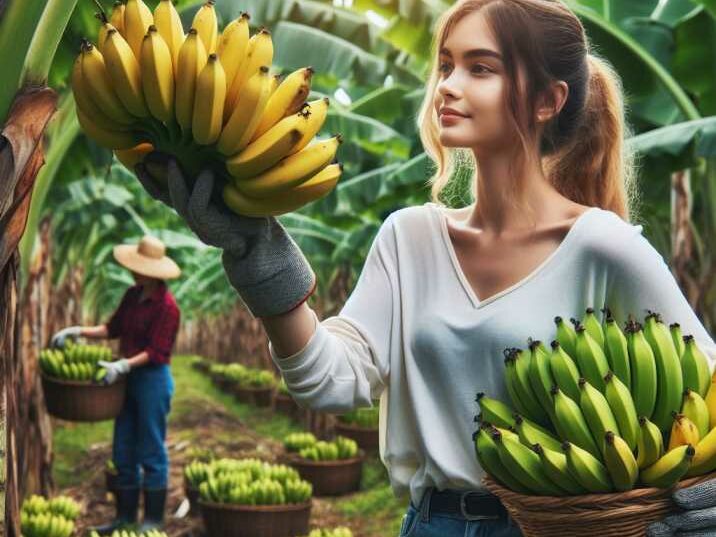Introduction:
Table of Contents
Cavendish bananas, a popular fruit cherished by many around the world, are more than just a tasty snack. They play a crucial role in promoting sustainability and supporting various Sustainable Development Goals (SDGs) outlined by the United Nations. In this article, we delve into the ways in which Cavendish bananas contribute to sustainable development goals, making them a vital component of a greener and more equitable world.

Understanding Cavendish Bananas
Cavendish bananas, scientifically known as Musa acuminata AAA group, are one of the most widely consumed fruits globally. Originating from Southeast Asia, these bananas have become a staple food in many parts of the world due to their accessibility, affordability, and nutritional value. They are rich in potassium, vitamins B6 and C, and dietary fiber, making them an essential component of a healthy diet.
The Global Reach of Cavendish Bananas
Cavendish bananas are grown in over 150 countries, with the largest producers including countries such as Ecuador, the Philippines, and Costa Rica. Their widespread cultivation and distribution contribute significantly to the global economy and food security.
Economic Importance
The global banana industry generates billions of dollars in revenue each year, providing livelihoods for millions of people, particularly in developing countries where bananas are a primary export crop. Cavendish bananas, being one of the most traded varieties, play a crucial role in sustaining these economies.
Contribution to Sustainable Development Goals
Cavendish bananas align with several Sustainable Development Goals set forth by the United Nations, addressing critical issues such as poverty, hunger, and environmental sustainability.
Poverty Alleviation
Banana cultivation serves as a source of income for millions of smallholder farmers worldwide, many of whom are located in regions prone to poverty and economic instability. By providing a steady source of revenue, bananas contribute to poverty reduction and promote economic empowerment within these communities.
Food Security
As a staple food for millions, Cavendish bananas play a vital role in ensuring food security, particularly in regions where access to nutritious food is limited. Their year-round availability and relatively low cost make them an essential dietary component for many households, helping to combat hunger and malnutrition.
Environmental Sustainability
Banana cultivation, when practiced sustainably, can have minimal environmental impact compared to other crops. Cavendish bananas require less water and fertilizer compared to many other fruits, making them a relatively eco-friendly option. Additionally, banana plants help sequester carbon dioxide from the atmosphere, contributing to climate change mitigation efforts.
Social Impact
Beyond economic and environmental considerations, Cavendish bananas also have a significant social impact, fostering community development and promoting social equity.
Employment Opportunities
The banana industry provides employment opportunities for a diverse range of individuals, including farmers, plantation workers, and packers. By creating jobs, bananas contribute to the socioeconomic development of rural communities, reducing unemployment and improving living standards.
Community Development
Banana cultivation often involves collective efforts within communities, fostering cooperation and cohesion among residents. Additionally, banana farms may invest in social initiatives such as education, healthcare, and infrastructure, further enhancing the well-being of local populations.
Challenges and Opportunities
While Cavendish bananas offer numerous benefits, they also face challenges that need to be addressed to ensure their continued contribution to sustainable development.
Disease Threats
The monoculture nature of Cavendish banana plantations makes them vulnerable to diseases such as Panama disease and Tropical Race 4 (TR4). Addressing these disease threats requires innovation in agricultural practices, research into disease-resistant varieties, and the implementation of biosecurity measures.
Market Dynamics
Fluctuations in market demand and prices can impact the livelihoods of banana farmers, particularly smallholders who may lack bargaining power. Strengthening market linkages, promoting fair trade practices, and diversifying income sources can help mitigate these challenges.

Table of Information:
| Aspect | Contribution of Cavendish Bananas |
|---|---|
| Economic Impact | Significant revenue generation, livelihood support for millions of farmers |
| Environmental Footprint | Low water and fertilizer requirements, carbon sequestration |
| Social Development | Employment creation, community development initiatives, poverty alleviation |
| Challenges | Disease susceptibility, market volatility, environmental sustainability concerns |
Conclusion
In conclusion, Cavendish bananas play a multifaceted role in advancing sustainable development goals, encompassing economic prosperity, environmental stewardship, and social well-being. By recognizing and addressing the challenges facing the banana industry, we can harness the full potential of Cavendish bananas to create a more sustainable and equitable future for all.
FAQs:
- What makes Cavendish bananas sustainable?
- Cavendish bananas are sustainable due to their relatively low environmental impact, providing livelihoods for smallholder farmers, and promoting social development within communities.
- How do Cavendish bananas contribute to poverty reduction?
- By providing a steady source of income for smallholder farmers in developing countries, Cavendish bananas help alleviate poverty and promote economic empowerment.
- Are Cavendish bananas genetically modified?
- No, Cavendish bananas are not genetically modified. They are a naturally occurring variety of banana.
- What are the main challenges facing the banana industry?
- The banana industry faces challenges such as disease outbreaks, market fluctuations, and sustainability concerns related to monoculture farming.
- Can sustainable practices improve the resilience of Cavendish bananas?
- Yes, adopting sustainable agricultural practices such as crop rotation, integrated pest management, and agroforestry can enhance the resilience of Cavendish bananas to diseases and environmental stresses.
